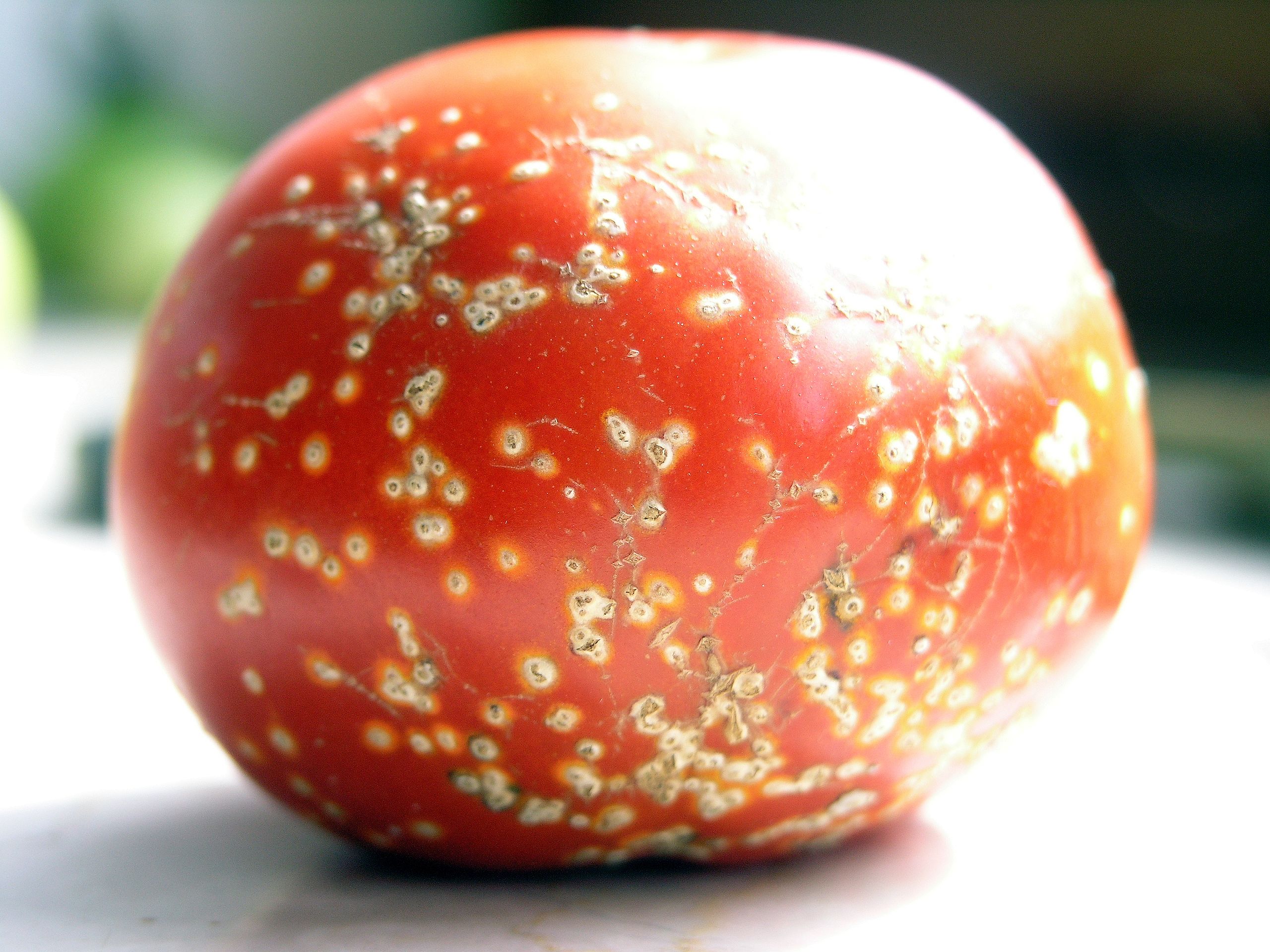
Bacterial ring rot
Clavibacter michiganensis
What is Bacterial ring rot (Clavibacter michiganensis)?
Bacterial ring rot (Clavibacter michiganensis pv. sepedonicus) is a severe disease. Causing symptoms such as pale-yellow discoloration of small veins, wilting, and dying of leaves, stunted stems, and rosette-like appearance. In tubers, symptoms include rot with a creamy or light brown color, cracked skin, and the release of a creamy ooze when squeezed. The disease can lead to significant losses in crops and requires strict management practices to control its spread.
How does Bacterial ring rot (Clavibacter michiganensis) occur?
Bacterial ring rot (Clavibacter michiganensis pv. sepedonicus) is primarily spread through infected seed tubers and micro-propagated plantlets. The bacteria can survive in soil, unharvested tubers, volunteers, and plant debris. It can also persist on contaminated equipment. Transmission occurs through wounds during seed cutting and can be facilitated by water, including through wash water. The pathogen reproduces and spreads within the vascular tissues of the plant, leading to wilting, yellowing, and rotting symptoms in the foliage and tubers.
Symptoms
1 - Effects on Plants
• Bacterial ring rot Leads to reduced photosynthesis and plant health. Lower leaves and stems may die, further impacting plant vigor. • Results in reduced plant size and significant economic losses due to reduced yields and quality.
2 - Effects on Soil
• Bacteria can survive in soil, increasing the risk of future infections. • Impacts beneficial microbial populations and nutrient cycling processes. • Contaminated soil serves as a source of infection for future crops.
Solutions
1 - Prevention Measures
• Source tubers only from reputable suppliers offering certified disease-free seed. • Rotate out of crops for at least one year to reduce soil contamination. • Practice strict sanitation when handling and cutting seeds, disinfect tools, and clean equipment regularly. • Handle tubers carefully to minimize wounds and entry points for bacteria.
2 - Cultural and Management Practices
• Promptly remove and destroy infected plants to prevent further spread. • Remove unharvested tubers and plant debris from the field to reduce bacterial reservoirs. • Implement proper irrigation, fertilization, and weed control practices to promote plant health and reduce stress.
3 - Treatment Options
• In certain cases, copper-based bactericides may be used as a treatment. Follow recommended guidelines and consult experts for appropriate product selection and application. • Adopt holistic approaches, such as using beneficial microorganisms or biocontrol agents, to suppress the disease. • Regularly inspect plants for symptoms, promptly diagnose any suspected cases, and take appropriate measures.
